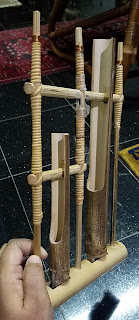September 30th is International Podcast Day. @hubhopperofficial organized a podcast convention in Koramangala, Bengaluru in honor of this.
Interacted with some Bangalore based podcasters and listened to several panel discussions.
Topics touched upon included
The number of female content creators on stage and seated in the audience caught my attention. If today's crowd is truly representative of the podcast space, then India is ahead of the US in terms of representation of multiple voices and diversity in podcasts.
Interacted with some Bangalore based podcasters and listened to several panel discussions.
Topics touched upon included
- podcasting is a nascent industry in India today
- radio stations repackage their shows as podcasts to increase the shelf life of their content
- lack of effective monetization models
- tools commonly used by creators
- new capabilities introduced in new tools
- creators' aspirations, influences and issues
- engaging with audiences using other online formats
- driving offline conversations via meetups and interactive listening sessions
- difficulty of reaching audience, since they are spread across too many platforms
- audiences dominantly from urban areas
- difficulty of engaging folks in T2 cities
- podcasts in regional languages are a miniscule minority
- back catalog contributes up to 40% of consumption share vs new episodes
- fake streams and downloads from bots
- differences in approaches of content creators in different mediums like blogs, podcasts, radio, videos, Twitter, Instagram/Snapchat and other social media.
The number of female content creators on stage and seated in the audience caught my attention. If today's crowd is truly representative of the podcast space, then India is ahead of the US in terms of representation of multiple voices and diversity in podcasts.










